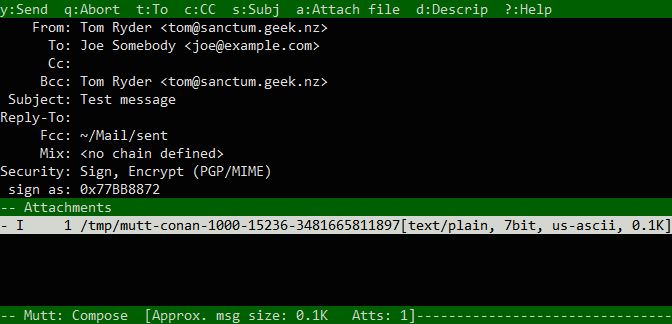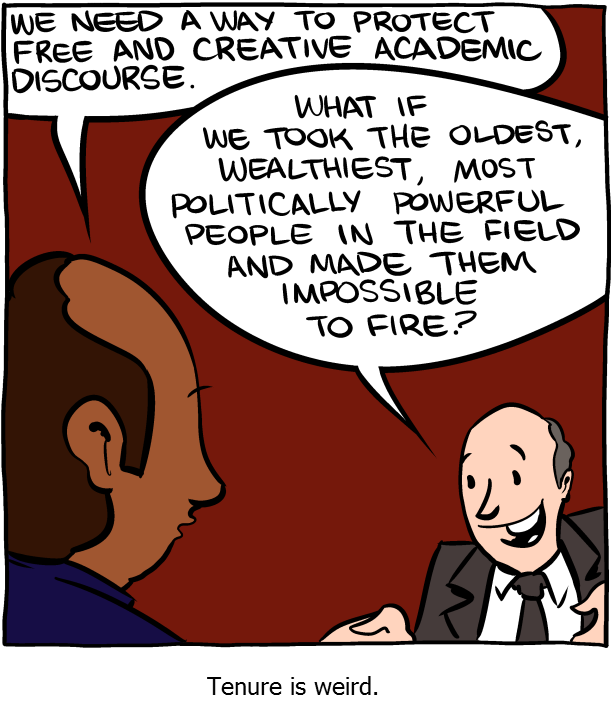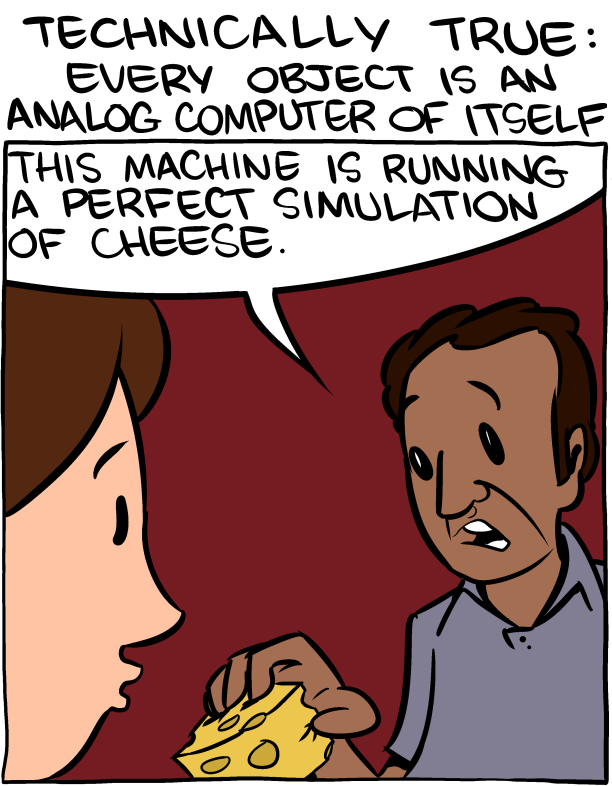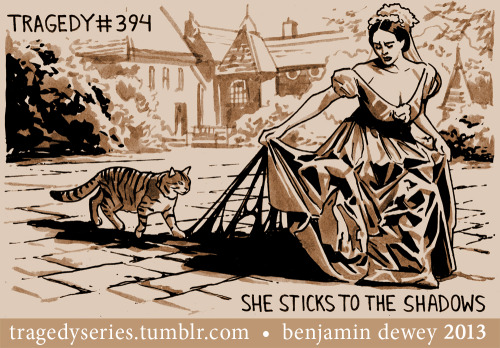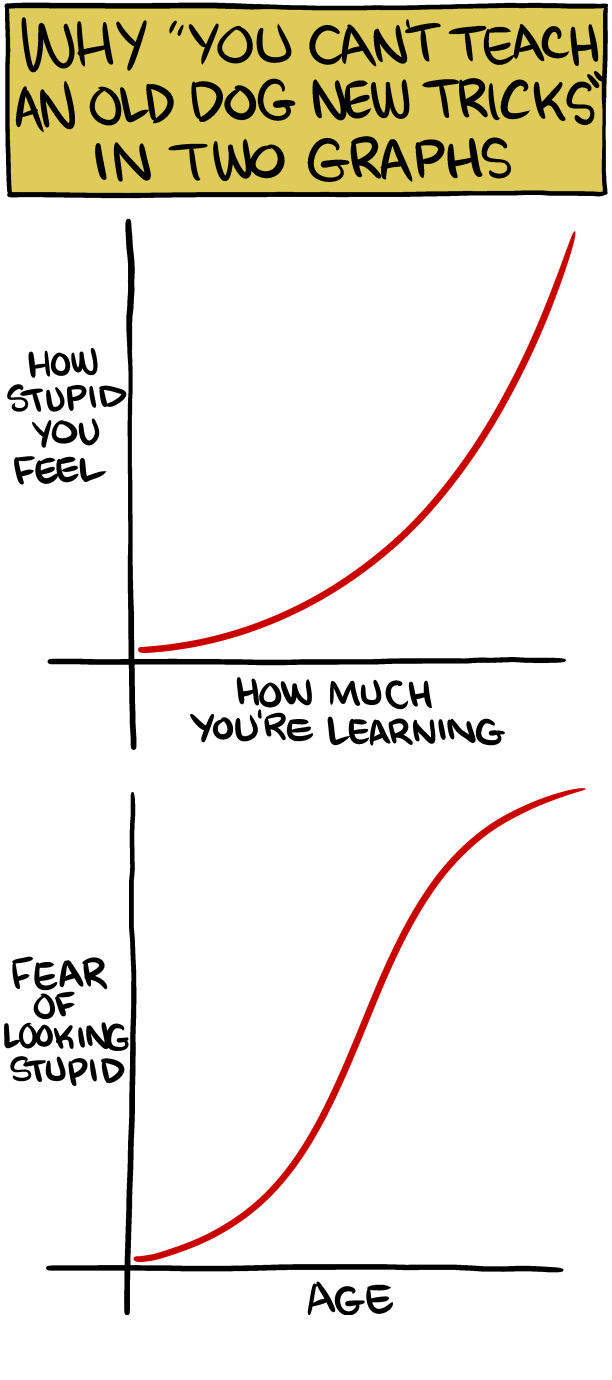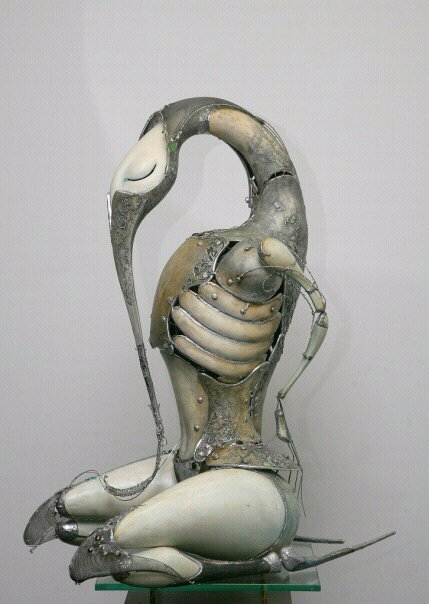It's likely that Kevin Poulsen will still be alive in twenty years time, and that his encrypted message to Edward Snowden will still be saved somewhere. In fact, there are several places where people post RSA-encrypted messages and seem to assume that they're secure. Even assuming that no huge advances in factoring occur (and Joux et al have just killed discrete logs in binary fields, so it's not impossible), large, quantum computers will be able to break them.
It might be the case that building practical, quantum computers doesn't turn out to be possible (D-Wave machines don't count here), but there are people trying hard to do it. From “Deep State” (a rather fragmented book, but interesting in parts):
There is a quantum computing arms race of sorts under way. China, Israel and Russia have advanced quantum computing programs with direct aim of gaining geopolitical advantage, as does DARPA itself.
There are classified and semi-classified DARPA and Army/Air Force/Navy Research Lab programs for the potential use of quantum computers for a select set of defense technologies, including: the ability to design a perfect sensing laser for drones or satellites; the ability to design radar that can defeat counter-stealth techniques; the ability to design coatings for aircraft that truly are stealth, owning to the exploitation of quantum fluid dynamics.
Now, government agencies don't care about Wired, but they do care about those things. So it's a possibility that, in a few decades, an academic lab will be in possession of a large quantum computer and might want to pursue some light-hearted historical investigations. (Just in case, I've included the Wired message and key below in case either is deleted ☺)
Despite a common misunderstanding, quantum computers don't break all public key cryptography, and quantum cryptography isn't the answer. (Unless you have lots of money and a dedicated fiber line, and possibly not even then.) Instead post-quantum cryptography is the answer, and there's even a conference on it.
So, should we be using post-quantum algorithms now? The reason that we don't currently use them is because they generally take one or two orders of magnitude more time, space or both. For high-volume work like TLS, that puts them outside the bounds of practicality. But for an application like PGP, where the volume of messages is very low, why not? Size might be an issue but, if it takes 1 second to process a message vs 10 milliseconds, it doesn't really make a difference. You might as well dial the security up to 11.
There are a couple of things that one needs for a system like PGP: encryption and signatures. One option for building post-quantum, public-key signatures is hash-based signatures. These are actually really old! They were described by Lamport in 1979, only a couple of years after RSA. In fact, as Rompel showed, a secure signature scheme exists if and only if a secure hash-based signature scheme exists. Individual hash functions may be broken, but if hash-based signatures are broken in general then there can be no secure signatures at all!
The most primitive hash-based signature can be used only once, and only to sign a single-bit message: Alice picks two random values, x and y and publishes her public key: H(x) and H(y). In order to sign a message, Alice publishes one of the two, original values depending on the value of the bit.
Clearly this only works for a single bit message. It's also a one-time signature because once one of the original values has been published, it's insecure for the same public key to be used again.
The first extension to this scheme is to run many instances in parallel in order to sign larger messages. Fix the hash function, H, as SHA-256. Now Alice picks 512 random values, x0..255 and y0..255 and publishes the hash of each of them as her public key. Now she can sign an arbitrarily long message, m, by calculating H(m) and then publishing either xi or yi depending on the bits of H(m).
It's still one-time though. As soon as Alice signs a different message with the same public key then, for some values of i, both xi and yi have been published. This lets an attacker forge signatures for messages that Alice hasn't signed.
In order to allow signing multiple messages there's one easy solution: just have multiple one-time signatures! Let's say that we want a thousand. The issue is that the public and private keys of our one-time scheme were 512×32 bytes = 16KB and, if we want a thousand of them, then the public and private keys end up being 16MB, which is quite a lot. We can solve the private key size by generating a stream of values from a cipher with just a 32-byte seed key, but the large public key remains.
The solution to this is to use a Merkle hash tree, introduced (unsurprisingly) by Merkle, in 1979.

The the diagram, above, four leaf hashes are included in the hash tree: A, B, C and D. The hash tree is a binary tree where each non-leaf node contains the hash of its children. If Bob believes that H(H(AB)H(CD)) is Alice's public key, then anyone can convince him that A is part of Alice's public key by giving him A, B and H(CD). Bob calculates H(AB) from A and B, and then H(H(AB)H(CD)) from H(AB) and H(CD). If the values match, and if the hash function isn't broken, then A must be part of Alice's public key.
Now, if A, B, C and D were one-time signature public keys then Alice's public key has been reduced to a single hash. Each signature now needs to include the one-time signature value, the rest of the public key, and also a proof that the public key is in Alice's public key. In more detail, the signature contains either xi or yi depending on the bits of the hash of the message to be signed and also H(xi) or H(yi) for the bits that weren't used. With that information, Bob can reconstruct the one-time signature public key. Then the signature contains the path up the tree - i.e. the values B, and H(CD) in our example, which convince Bob that the one-time signature public key is part of Alice's overall public key.
So now the public and private keys have been reduced to just 32 bytes (at least if you're using a 256-bit hash). We can make the tree arbitrarily large, thus supporting arbitrarily many signatures. The signatures, however, are 16KB plus change, which is pretty chunky. So the next trick will try to address this, and it's thanks to Winternitz.
The Winternitz trick was described in Merkle's original, 1979 work and it involves iterating hashes. We started off by considering the one-time signature of a single bit and solved it by publishing H(x) and H(y) and then revealing one of the preimages. What if we generated a single random value, z, and published H(H(z))? We would reveal H(z) if the bit was one, or z if the bit was zero. But an attacker could take our signature of zero (z) and calculate H(z), thus creating a signature of one.
So we need a checksum to make sure that, for any other message, the hash function needs to be broken. So we would need two of these structures and then we would sign 01 or 10. That way, one of the hash chains needs to be broken in order to calculate the signature of a different message. The second bit is the Winternitz checksum.
As it stands, Winternitz's trick hasn't achieved anything - we're still publishing two hash values and revealing two secrets. But when we start signing larger messages it becomes valuable.
Let's say that the Winternitz hash chains were 16 values long. That means that one of them can cover four bits of the hash that we're signing. If we were signing a 256-bit value, then we only need 64 Winternitz chains and three for the checksum. Also, the Winternitz scheme makes it easy for the verifier to calculate the original public key. The signature size has gone from 16KB to 2,144 bytes. Not bad!
But! There's still a critical flaw in this! Recall that using a one-time signature twice completely breaks the system. Because of that, the signature scheme is “stateful”. This means that, when signing, the signer absolutely must record that a one-time key has been used so that they never use it again. If the private key was copied onto another computer and used there, then the whole system is broken.
That limitation might be ok in some situations, and actually means that one can build forward-secure signature schemes: schemes where signatures prior to a key compromise can still be trusted. Perhaps for a CA where the key is in an HSM that might be useful. However, for most environments it's a huge foot-cannon.
We could pick one-time public keys to use based on the hash of the message, or at random in the hope of never colliding but, in order for such schemes to be safe the tree of one-time public keys needs to be really big. Big as in, more than 2128 entries. If we use the trick of generating the private keys from the output of a cipher then, as soon as we fix the cipher private key, we have determined the whole tree. However, although we can compute any part of it, we can't compute all of it. At least not without an infinite amount of time (or close enough to infinite as makes no difference).
So we have to defer calculating parts of the tree until we actually need them in order to generate a signature. In order to defer bits of the tree, we have to split the tree up into a forest of smaller trees. The top-level tree is calculated as before and the Merkle hash of it is the public key. But rather than sign a message with the one-time leaves of that tree, we sign the root hash of a subtree. Since everything is deterministic, the subtree at any position is always the same so we're always signing the same message - which is safe.
Thus, if we wished to have a conceptual hash tree with 2160 leaves, we could split it up, say, every 16 bits. The tip of the tree would be a hash tree with 216 leaves. Those leaves would sign the root of a hash tree of another 216 leaves and so one. In order to make 2160, we would need 10 layers of such trees.

I can't have an image with all 216 leaves in each tree, so 22 will have to do. When generating the key, only the top (blue) tree needs to be calculated. When generating each signature, all the subtrees down the path to the final one-time key need to be calculated. So the signature consists of a one-time signature, from the 3rd leaf of the blue tree, of the root of the red tree (as well as Merkle path to the blue root), plus a one-time signature, from the 1st leaf of the red tree, of the root of the green tree (as well as a Merkle path to the red root), etc.
Obviously these signatures are going to be rather larger, due to all the intermediate signatures, and will take rather longer to calculate, due to calculating all the subtrees on the fly. Below is a little Haskell program that tries to estimate signature size vs signature time. It may well have some bugs because I haven't actually coded up a working example to ensure that it does actually work.
log2 = logBase 2 :: Double -> Double
-- We assume SHA-256 for the sake of this example.
hashBits = 256
hashBytes = hashBits/8
-- This is the Winternitz parameter.
w = 64
wBits = log2 w
-- These are parameters for the Winternitz signature.
l1 = fromIntegral $ ceiling (hashBits/wBits)
l2 = 1 + (fromIntegral $ floor $ log2(l1*(w-1))/wBits)
-- wWords is the number of hash chains that we'll have.
wWords = l1 + l2
-- An SSE2, SHA-256 implementation can hash at 5 cycles/byte
hashCyclesPerByte = 5
-- We assume that we can generate keystream bytes at 2 cycles/byte.
secretCyclesPerByte = 2
otsSignatureBytes = wWords * hashBytes
-- In order to generate a single OTS public key we need to calculate wWords
-- hash chains to a depth of w hashes.
otsHashOps = wWords * w
otsHashBytes = hashBytes * otsHashOps
otsHashCycles = hashCyclesPerByte * otsHashBytes
-- In order to generate the private key, we need to generate this many bytes of
-- key stream.
otsPrivateBytes = wWords * hashBytes
otsPublicBytes = otsPrivateBytes
otsPrivateCycles = secretCyclesPerByte * otsPrivateBytes
-- This is the height of a tree.
treeHeight = 8
-- To calculate the public keys for a whole tree we have to generate 2^treeHeight public keys.
treePublicKeyGenCycles = (otsPrivateCycles + otsHashCycles) * 2**treeHeight
-- To calculate the hash of the root of the tree, we first need to hash all the
-- public keys.
treePublicKeyHashCycles = otsPublicBytes * hashCyclesPerByte * 2**treeHeight
-- Then we need to hash all the hashes
treeMerkleCycles = 2**(treeHeight-1) * hashBytes * hashCyclesPerByte
treeSignatureCycles = treePublicKeyGenCycles + treePublicKeyHashCycles + treeMerkleCycles
-- As part of the signature we need to publish the OTS signature and a path up
-- the Merkle tree. The signature is the same size as a public key because the
-- Winternitz hash chain are just slightly shorter.
treeSignatureBytes = otsPublicBytes + treeHeight*hashBytes
logKeys = 160
forestHeight = fromIntegral $ ceiling (logKeys/treeHeight)
forestSignatureBytes = forestHeight * treeSignatureBytes
forestSignatureCycles = forestHeight * treeSignatureCycles
forestSignatureTime = forestSignatureCycles / 2.9e9
The Haskell code assumes that one can calculate SHA-256 at 5 cycles/byte, which is possible for concurrent hashing as is needed in this case. There are several parameters that one can play with: the Winternitz value, the size of the trees (which is assumed to be uniform here) and the size of the forest. I've taken the size of the forest to be 2160, although that only allows 216 signatures before the probability of a collision reaches 2-128. However, the overall security of the scheme is somewhat less than 128 bits because there are multiple hashes to attack concurrently.
With the parameters that I picked above, the estimated, lower-bound time for signing is 0.8 seconds (on a 2.9GHz machine) and the signatures are 34KB. The algorithm is embarrassingly parallel, so multi-core machines can cut the signing time down a lot, but the size is more difficult to improve. Changing the parameters to achieve a 20KB signature results in a signing time of nearly 30 seconds! (And it's a lower-bound of the signing time - in the real world there will be additional overhead.)
So, should everyone be using hash-based, PGP signatures now? Well, probably not, at least not for a subkey: PGP clearsigned messages would look silly with 34KB of base64-encoded noise at the bottom. Perhaps for a long-term signing key if you really want. But, over the long-term, it's generally confidentiality (i.e. encryption) that you need to maintain and I haven't talked about post-quantum encryption at all in this post. (Maybe in the future.)
But for problems like software updates, a reasonable case can be made. The size of the signature is generally trivial compared to the size of the message and software really does last for decades now. Hash-based signatures allow you to forget about any cryptographic breakthroughs to the greatest degree possible.
There's lots more to hash-based signatures than I've covered here:
-
GMSS treats the forest construction as an optimisation problem and solves for several cases.
-
W-OTS+ builds on several, previous papers and changes the hash property needed from collision resistance to second preimage resistance, which is huge for classical machines! It means that the size of the hash can be halved. However, quantum computers can do a pre-image in 2n/2 time, the same amount of time that classical computers can do a collision, so it doesn't help you there. (Can quantum computers do a collision in 2n/3 time? djb says don't worry.)
- If you don't mind keeping state, then XMSS is probably the most recent work exploring that problem that I'm aware of. (Although one might want to combine it with W-OTS+.)
- Tahoe-LAFS has some notes on hash-based signatures, notably some from Daira Hopwood.
And those messages for anyone in possession of a large, quantum computer:
-----BEGIN PGP MESSAGE-----
Version: GnuPG/MacGPG2 v2.0.19 (Darwin)
Comment: GPGTools - http://gpgtools.org
hQIMA1tQlAt53r41ARAAsCwY0VverVliy5i29NafjAEhFpmwDDAHVdzOYtnGbOHL
Hi1t1hgRPe5NBD+AnDENmUbJf4hNxH88Uh4qTqy8ja4qAWyRSJXENijZs2Pjhv+8
ovJhDSDK3N8bGDcM7XS7o1FGrLJtpV2CqP4DP4rSr4fcQz1ZnRWrnBP9XI6FAbEp
XXRtW6mbtPWTLfgvn91Ka3aJGegXl6rFYeqmXgmZiPYrnmNSAgFGSKg+Er2Kz+jE
sl4tS/hqP9vhAAWWCOvT7U5LMuDGjawsBXjHTPA9FokP07euxRPxMraz5FmrtZYb
erFhkMlW5IV5zG1BEO5TetyM66hAZid/QwdFzlDW3wHQoYJdJWcZEYY0tGWbL3+h
mfgcNX9gwnn0o0fU6xqpn/cApv3uZUkNIFPxQXGzHqrs/Vv215ut8zwLI17G/FIF
McuOAP+Upw4WSVUxw5+UhzRZazW1AO2DaipBou/3IIez0WhXhEB4AIwjdH5ATk7p
MMN2c62LwqLGCpNOMGPub5jQ0lIibH9eIDnPgQ1UR0OHqb/gzIK05mSFQOYCFYSh
48/8PA4WHocoQGGfbBTkIlCU+ExYuMvtNdof/EVVsaw+r2KAsJbI7+OfdTNgNgSR
zqQeSDsc9+6GYXP6EXnGdrtwC94wQl1NxzXjr+C0v4ri+n/i+21fnoAP2qGGmmPS
7AHjSHv3Wc7lUy9ehRp1z35jaZoNE9T5JfKmMtXgv+EGhO2wfuFaeJNyKFuNQ5XQ
Hgko+OnS2YTxGSsLA+J4nHgYPLcnK7WIQCIc7gC9TJIAPfH6nxn7Rz1uz2Amaxg9
sp+LO/5DyN/lTlJONMCvDp565s7vWAq5GYrY+ff/3qsZWfkgaDXhK4ztgl197hns
uwEiw3uBSOo+fQtDyitkO7+W7GgOJJA5oiPJL2F/2oS0lRN+QpClVmgiF+2mpEBn
x8gzgYqIFMZiminCxGeUFhI9CTPNhUq02Pxb/G//4MDyyaAmrswc3YE80+CJ5GQF
6iKh0uxtzOEEOpQrRoH124H8ubpYQF0DwFfEXientJEkQHWCHbsE1V88YYted/44
Ej7teBvl8NktZwMX5RdzjSs2JqJDH4NxEz68lqurGLi8Lhek6Ha3+SL2SlJ55h1x
VuEaWEkWUBe0ja8S4NvjNH0GsL57dTPx2stV0gOrBwEE1l7IWNLhq5f3HSJhicjs
+AYDEBVt3AEHefOB5s0PyktGytvBHL4Y5prP2iF3dbUe3QzLP8CdVBj9vHkhK/XX
hAJrSKJJrR5s9sq930W3+UHXnj+e9cKv7JXkPDwnexF8gF+O5FfmzlZX0+gSFVc5
Sl8CJ1fXcm+SeD6PDCtqGL3w0D7Xx3ZbR3LvnKvnN50CvH9m98I5JrgyJLkDSaYW
laz5MY8G0QsAudSqeOiZudb2dboYKSli8kok85S5ABHYmZ7muvFaw7p2pCKi8HQm
dygj4bA/ZVTt9vnHu2vzXcV7mbmaGzLlbXBr2uEvLyTQ1gQ2/BwWE/XD/mod5Rsf
IJeyGEi3T8Lm1TwKlVtdkxOqskUDQADjz+M6segIbXZxlEyln/aH8sfUpy26CTc6
FXL5XQGhjYdbSW1a5No7bIaeClktfU5mvsD0+XzlzcMzlLZRE/zRsCTc6QN1NA38
0qpYLXc2cKn0ePrURf8Ckp4ZjCswvHBD+OLhfOaefFW/+LMjDIUAc9lkZVzdM8dk
qGYatDG/3kD2n3wuFpb6LUU6mYPBnlYTEPzCeiur6wN54j9Jif0/ccLslqSmxb4r
cmju4FVZU+1N8cS7WewNwrxPULnM656NCDMFZE1zyKOppYaZC5PBSn2UoGLZMhpG
szYD14iYpQXxIs6E3ebkA3wypZCqLpvtDIixSjbtbgu2jI3GmSFBROexpjj08q5E
QeYaAwYPvKit5jGEEY+Mojcu/qjJS1290dsjESTpOzd3dd1lYlhjfTZLOvdrSgyR
UGvyfKL23gc6CNO/qWY1P6lJLhx1HfP7pdUC1VDc8Ku1QFPFDZYIkIrRS/WQ0Ozd
mjrTkVHBqpU7mshL3Nijl8lV7/IqTxkkD0r3Hwo0n1W8J1xdLRpXctSdXdncKLt7
eibzlMaHPMylo8z+43s71q92bT1XyKhyv2yBacts2lvRl4AxpZB4XJi17dMcg7Td
Z4cMPCgAdzQURkQo0EoiWqEroOtokLvdbKLxtHNwMWR+qC0WKHrS6F6/ZZxmoZyi
MhyTdyiDUJAXxblFZKRssrXmd3Fj6Eogduar3EyXKvzHG7Rof8Pr8pH2DlO/2v28
qQHQX0Fv/zvqix1+mRDFkkBDpkgeRsr94X+RTSlg+oUKxPdv0eTRBwgxHln0XkbS
fts7qgBQulSZSr8g3FNkUE8ljUeIWmyy4YQ6fiIq+0to5wUVxfgjY83jCgLXaplO
i8evn8ttlnmIWQCSQLelu+DiXTcWEpSS/D7VPNkIM9B1Ef5cJOC0NCqaP5vhP5e4
9FZG310zO9Gzxxs8rNoKnlbWJgsc6eTHmBL5hFWraVvaDsZjPGn140h8SmPWwg5R
QAaYPc3M0KSG+64T0GWHceh97vkSdHtYLySpblu4s/Bmgd2O5iXGI2ZB0cZmDZ7Z
jtoB4YNnDuc+OmVoJivzTusXLABbqa+7zbgAgiclEkxMEpXagh4ufXOhT9lwp7Kq
P89igEdtKkKUx7LAhjd8mn4rNknPLElA2GjZWyE17aiumVK6a9yx9enkBv9jfSut
ImZXHs5XHqNxlQDSMjuS5/V70qXwZvPdZtYDGDOgll+S+rET+neXOjxoCNDDdZCa
6Ba1t4D/moe6xwkrrMSZ14KGLURJg2iJW85w3hDH3QQZZmcNEg/ZmQogO0v15PzU
XSGhw8DOfw5oLEIBGnxVpQ5Ph9ROMm33YeJGcU62x1uewvYQ+pet5V52O4EJhwPV
DmMMfIVu73zJd1/RetBD49ayuFoalzhydT6kHTS7n+0ajodifo1PPJOjfbjcv7RW
G8cvu+hpgoXVx9qTJQzzX+6gcsQqaPWXfwciBA8Kmcie4uIeYAAhKyzknEnvQqyY
oSnXk6FsE6ZCUyy9w/kgdKwR8si5INjmlGzVuIrAso2hXluq5WkB20jcuARmDTXa
UDA8MXjfCVVSV+X3bPU26tbYHTftDpwBKxvlw0o0Jty2V1kf3jW7sRk5j9UYpXKI
xpsofpc6UL5BO2599jYY22/4NFBIgpcecHq+FwWQ9lJKXnPbnmGs9gRrrJ7iA1S+
l2M32azLnvsNF9ZnOSCudACOpMAAzs9ulnpS2ETRIvQ6pAksTW0ysgb4OyDPEzAO
8k/nzGztIN6XIWu7ahQKU4qxycGPmQvCup/8IQu4RvXMaUGetD+04rwXo9CdFTtt
Nk3WQ1RsIPZXaBgdtD9bvG5S9/a+R2lcOtS+9NbO4RFVzZn/DA59ZvvMVLFc/BGs
eu5X0XKz+T2sQ19D20dDau6pTIJIm0EyJbugIYo+YJKUbhDWk6gDbX+6axxHfT2O
hZRwHzuKobkX51dZ3XPFuOJUqaHVvbv56ydwkSHf0ygCMM/nDOkz7Fxjo+KnuXKu
EQMxAtngBmKzPLZNxXyT2VL79ZZ15SBuMMj++iheTV4nrHx2/+lvfnsVX5xlUjV7
GDMERHxlMAjUHU0Ww2QKMLkdIOJymxytvSk1ZT3M8/B9WkCnAL/4o3FDrHIXRACh
H9z6c/e9imXgqBXnIIdh8Zxx2OR06El6A6FV4dlsoB4xMToKqSpTKFCo9s/1UBoF
BQBPuMYz2geweSv4PDOZXtqFm8nACM7SNk89aIBj6G8AzVfv0L7lWVBUC79BJ7ES
K7fytKl5hMyQLAKjNhguox9y//48M99IGg9vPBkQFrYaQt6UeT8Js+IgEG6SphVW
X0A8y+EqpOsuXe6ip+RAULlum/5dKUdN/Frwx5afE21MNuG4o53setzz3jB+MZly
YHLqjKRCHiIA2UrPqlVA6fZCAqnhWdQ8u+j+VUfDbpNnTgcEC4ID7HZFZw49nU22
AgEqVClhET8YwzFm/PMZV7nXhXimfeoOWZXWCVvwUiwU3k711fOz+PFEj2sOuOjJ
kld5cLtmOHkCrMh0f/MoxOP7d8MudRxc+pN9hdwVhSro4O7jhcA+rOCA2vrxe/nB
3pBUMrZ0xzDRLa2ZMUNBR1e4de6i77XAunF1iNp45XI/3/5uQ4+RqEZIG5RdLtIL
fSVDVvSoLBQGeKeJoz3gpjcC4d7ksCaesEDuMKJN9gE0KZDuiXprOZNZbAxoHBLl
+38tu1p2r2VadMz2hQQure0hiBo1p3P+Lhwh3pQVHW7nIMoFvrtN3FCdLaaryf1P
DnfT9h6tcDkePc6IEqteGhyJSkl8WnLGIrZJzJPS9szQtWYLlU9P9tSJMTKG6xTF
Dk6l9AHPDUz2/hPay+Tn0+NOw0m78rfU09Iy9JpXaiaoHLrWlfxLSx6B2dxV3mJm
0mSZF0x+eNU/tY0l1pGG9vn8E7MuRpYIU/lOqHGeZAyaH6ERAe8yueOl0kW6dFRy
aWAauUBkvpNWql56sc3jpMPAPdGH2ukId7aDQoi1BLrPM4glSKMM5A3WTkHDQ50s
EWkxiZ9JR5Iv4mx4g4VGnZKnpeQLNnnP9AlNRcnmzVS4+WTNEwnR2vLZPLOXt465
EilaxxeOO0+Xny9+oVF1tjCi5cuXZzWmTLVQ9dyOQPj9cv5vtcMm1UIMv8VVDR6p
JVDg4LW0wW4pvBVbD+CyFN48z5Y/bRBa+Pf9JXjYgtpivr+1GAPWReVXdfAGveFm
DiPTxZltSjUSwfp3kBoqpdrFBzOeA5Que3F0CW9Eoy1WyMEzAok+hYXylXnyl8FL
au5nMDMouo7CWpe992LuEli2JWskbW8Fp7Ryov7eSV3JMoveSyjBLcXtaVGk8/yz
reYRxm4IwIzhPhdRkUj04nPkOoEuALWWW+GCjBRJlv2I8Ht2yAINY8Xd0Qj94qSy
KGHj9cyK96HG2zpdvvtH2rI5+ohzj3Pgd/Cz8zrh486VGR1HmWJeQP4xTvmiTrT/
f44UXpmcr58aIPv4jg9bc5kODfLKNn4Fthxh6mR7Tu3V5zC2BWs2Go6YLJ/yXQbm
rxHiHdyr7oukZlMO5AonlYqP4Fa2rDFu/yxO9XEyOtCk/pHTgIhPvQWLH9x7fPZF
WlbP4/T9/F0dnS4YyA39dvaOv0ItoEwRZ4GGtEz7/9boom9cDpqJrpSv6crq4t7H
QPVNWsamwNDBkT1xUAw1cutq2lkXmvYel+uRyk2PmAK35KMYr887L2I85q50leww
a/ILpleonjmlYMWJtpjPjsbMmV7P8vml94hxmN2hsXd1GlvIXgEfISCptGDCdUFL
zvVTgy31KHRnS7ghvZK/0bnRsxZtKeA8wDzK7zXCrQgtS+9uqooXbDbCoVRDVbHD
Fp46G4bYNoiNqNRIYZkUdNeev8yDxYxvdfMXBdwSa7qvn6KLe741QPSZVB8wNcaq
KFbrTtfsJYOEJEWfw9OPL53Vibh0+0KosfIhmFpmbdrhFdWlttlKSEcNoICkOe3Q
wzSWaStynYyXSlBi1l+WwLNNt8Mec9J3iP8jlqYYqRos0wFw+S3OOfVFP4csiWoA
oKlJQK0UchvZdxF6TxdF6xc/Wnd+L7X9lwaijHE9WmvolYwB7/Ki8mgB175YnZp+
hGr0ucMub1nm9w4pbJoYvOx1+ugj8j7ZbHmzDqHZMaNeAPp7y5LO3nv+dpkJViUU
4Rc6m8NMAmhyfaZ5PRqxvXI5oA5z8FubPPjJ8dUQWZ0GTw2HqAVHZS9fq39S5dnI
ExNZEd2ondGp1l7lbOtZ0p7NT50yI9XT0RZhsTb+Ab4RbzW0MYGGN3KfW2jr3kuP
sQCUvo4H8epsVet6jUTj1x4+9sKJOcrfwk0xPKor0aJZKexkMBz/z9CkLhUAeC2p
Kdobeb+SCgolLC4TJPx7KZnKogIIkQTPmLPJ1jj5/yyYOrS36WRPBU9rcnjQpFcc
PGgeBI2ECUs06D5h4v+p0mK3N/S3ChxRF+xRTBRnHE7eyAJLFlswWfxtt/DUsGEt
kMqdUQB8xQ1/DxhF4eMsAcsUHqwKDKCXslVK5jtNfL+nvo5CLWUrlPdzHB5rJRxf
CsSsYNsK2KS8ioB99nJIey/q+84LmNB7dnwJn3bUx/kSXlgHOIM7uA84KR5Q1E7k
Q/4vTSc3ZtFSVWpF58qZ79sAc7UUAeLeGIQkuH/GacQC70Hf5pyht6klYjgw5z26
ehI7wPbFOrjobz88ejgUfgn/yZFLJzuvG+2IKldEs8aBu7W+fz8v3WKUER5ix/j9
bz6FQYTpSyl9ZQmMCyQzPT3D0IODkhX3E/1jtSo/OfAn5NoSpBwXLX9UNW41b4Ve
6id+Yg1E8AwPbJr1pmMuhDJbROmLjUwMqLKu1kLkm5RO9slaG+BMIV4rw8+NFvRb
T52y4rtgmssTGK2x39UGNL+Pn2OXjQF1xogV2YHBgSSuVC2tTkpUzYX+JJiT3SaZ
aA/sfktzCFQe2OHc3tTga//IuziZssPMTRnE8ZM0CLaY/2RPy4yzlpoLUPASQ9Wy
YNgb9d/gx4dilx1n9l8bPd2WQhy0ufTpm2j6qFp7byzPjFWNggKmvtnVXOK6GYVp
slhbl8c4c4d/3+w5GotnDxxYuTkILIZXNoY/9UFsibSduObkX8DgKaaleyK/aLiz
xFGRzWNp8a3h7fuREoavF0lGHJCckjzrQg1y+/spsJPCHTtMIzfXigURZBdYkLF6
LATYXc3BX2jpYubLE5V+ATQJvAWSE4s9q3Tx3b9ZgpPaPKfnvV9TIEJcFgV1j8oy
qCa8hYvaTHdxFbfvcnlmIpppGtC2DbICkoea834VapX9RJM05fQyhTmhOkkgKCN1
5zmcoJg9EQXubK6VpoleptbKOtL9Nx+4RqthxVfZps6qHmZO/xdogLcME4t620UJ
ao8UqWv9xg9i2s0FgfK5l/7LZSfCfJhZb9LjoHsnu3W9SFyJ0KQQQ2LGBv757nuq
/hdYF5IW8NMd4fW7NpgHvT1thQNld1TibzP0wWz3RfIqwWTEm5dPWJlqIqmOjTqp
OzvaqkY28xHxU1Mm5sRokI9MfU9sOR25h+UWliOkrVubV4aJrtbHDtBeil3ZAqGp
2QnVPTuO4gApjIcbR268Po4SIQ3tlxwQvBdc8J9YYW9/4hxPq678wwq1MCgm6ilz
ftGPxCQ81aEpS8U50iyBQLAE6Zpy0U0gPupj5od/ifNQOlaW/MgwyheW+bRsdCKx
OfVmO3MJHXJV3iLK16bXZGFr4qP33wJfAHZqY3LfKwB/NUkF1F8b8NlAQF3CTwyI
PO9rLayeReLBi5mlfOCW7E9RhMIsVL5hjiVUBidxMvWDdn6mY7tfMdzfFm82tvT9
cWd4+8pOtYyL4olDUcbZImTtsxWd3ahOtIxsBMNmL922OoXl6pCjZfnJmeN90Kao
xn0e5Gj7tOLw7j+34KpkbPVYQomdD61XT/QsulnUGf5YhRJr7o36k3mSCUm2n0dh
++wUhec=
=7n2p
-----END PGP MESSAGE-----
-----BEGIN PGP PUBLIC KEY BLOCK-----
mQINBFGaYDoBEAC9PFBixMQKjMPdppekOY/fJLipIWBNPDy4W5caqhXww9EL06Yw
+TeSm2XFwR5quVwdTEsK2JXLiF7jBuyskfp6mmtwA0DV1TXyD2wc3ixlVi4vnMY+
coq+txzMOU1HfMtI1V2k+oTYHH0ImWFa+Hmu1vJwIj19MkXW/6JHHdDaEejQMLfV
zvEPedb0y92pvA2IE43UDcaW9OZO3lc2FrMI0WAueWVpaFD43jNvSx6pyQxfnDQe
XNGsZmXdxkmcpeMO2ZXlH1DqHA71K0seBksAmF4/Z6QR8iooj+O7xJ4dzzY6bxrd
aWmEvgB93nopuHuOZKwS/RgHT1NNPZHoaKpSx/bb0FKkH6fH4q7c+JkSK9+i3MEa
nVUc856vk4uwECAtJkc4Aj7ztG00l0Yx69BasEMdFiqQm6Uu1S15N4ZihIYQUSqg
EJs9pfwjvczDDlZDkBYwyThR6awil9zr6j3aPQ14u24WE5U7pFU7+QD7A7QCMGrP
ieBxXPRyovU7GwUO4dCHghA7QbxBNOiZi+vYbxuPAA9WzszACtcl/DHFhT2ZgcYd
9iCHKGWu3aSBVqlCuBEJLDU7UCTUnK/ob2qWaM/7bXCABr/izkXDTloYRAwCovI8
lKD1pDGu/yOUw4LixhL6QdbH1J10tPGdKalOk9nRYZ7EIvODffCVzjcyfQARAQAB
tCBWZXJheCAoSW5mb3JtZWQgRGVtb2NyYWN5IEZyb250KYkCOAQTAQIAIgUCUZpg
OgIbAwYLCQgHAwIGFQgCCQoLBBYCAwECHgECF4AACgkQHQ2X8ivgvCmBcg/5AfqR
Y1Wg/x4oN4VNcDZ/mQYU3y0mJ4g0Lz69e8MsDB51f/0qiiC99jBXU3Cv5plukf+v
252fAyGn9Njq5y8PWWaPx1wihgBjyWZOGjl4LD/xHPjtHx8cjDEwzCAdHGepeIY1
mvCZr9zFV7GnKEjlgAs4yp11YAhumv71JVF+1e+vhrpohW5XhuePaZ/B5blhJq9F
pHOdIXwVmb4VMh6vp3YMiqT2AOMUQKwq4IGNPZ5dM+mY1YptqJ6WnXviQMyBMJ+5
nc5l8dT8dgCfXIGUuGRQFR8u/RCqV1WdP7VcqV2oo6usTgQJyTp1tv3bcyi1Hwif
eIiaSRYgUGKJBrNtnfjJ70o2WxBHNRSbn3EZEjd5oleAl5ngWZXTQA6UdPpi2jXP
lWi6mj6VHoTSIe1M95JowHkzHz7EFh93iUKMso1m1itToyI7XTXUUNSVIDBPx8AJ
1CVWu5KX4NfIIBv5/YKumeho5rzRst3dDk1FoEeekDA3I3hgdhrN9OW+12WXGj2R
C7I1s/VSP1GwEcOJ+cqaL6LtEaeV7xxdT/glmucH5NxwQyT6f2D5F/OCtP1v/xH9
/yDUIbBz3pzYjDvWnCnWHEq9evHNqzdDcfoTBrJ+q+F2O+5eT4Xc8W968HTKE/sF
+Unb/BTlDzJFXh9Z1c7Q0uX4ORobHn29huCnFTq5Ag0EUZpgOgEQAOE+hiuOPnkf
w2n4zl8iXpEdaHl5m8FpDhEyM34BqdPUuBBuNqHteTGQkjdRuSTXg51k4V9HcKbw
PQjguFfdSDGZJhr0Nk7QeMQTNmIIHfeIGi517IwgT5j5AulDVYOjNgQf5QEYxbFh
gxoVBTrUOODTxHUDRYwCKdAn6LEdg+B+mNR+KsY4+W3/fMOKE+3yTJP2DQxf0+Tn
IKNfNRzjTgpNo2I0bA/t3v8erotQDhdTDezPWwZbjP1/VbInBsSgj8m3xYypieet
SFKkNoMxDAzWVN8aSApp2hMpDymhpTh5/A7N9JnhqX4ZQnSyOInaTEAFyHSlBy4F
xJ7UyjWxwqXpDg5AeNcB0AkJnka6vdGqPgUTwI6RLJHd1Hmn0vyNeXY59R7+FH0Z
HVXau8KyUIQpvd4lLVw1zqwA+JsoS3Vbs6KxqzXhlGcnZGOGIgf1F4iq0nHiKbjy
65if3juSZ5nFzOWWWqDxjyr+amF1+rIvNRTYNBccg3WpeaMSTGMz+BMSqFQgjl7D
ozrQSQ4JKaoMI8worF0HF8R11198L4DFHY4lFDzlYAHY7nd4nQdy203eQDd/XEfZ
Gi52bdvni/vjRhx8QqqsvaWlmwv0EK6aTOA7Bs8RkzPqXicFUVFZA1hb2nnRIwM2
BMjHf770JaKcrmyhZ2daEH0K5ZWO4FEtABEBAAGJAh8EGAECAAkFAlGaYDoCGwwA
CgkQHQ2X8ivgvCnoCA/+N1ZCQOPjh8t5PcUo798T9ZVRMNN51DXcNK6CMsltFv3Q
UGv7HWLXHiMA1Ur/bGpLO8682z1FAzmJKZZZ9EI5sBR21opYZrXu1T9n/BDYVb17
2oQP1Ae4uePGwFlBh+LNXJZIdpSazUAB+AmvWMlgMzoorrqjIMZIVdGNR3e+Shx4
zPvJsTtogOcrcsrEb2XyThF5J8PMbtDLQ7X9tjWRcZxLypBdObRVGrxjqOK13V8P
y0lkUUZFatM9EDzklTSWN7dDT4Uhuk5WcRRErP4DY9ewEW7VF/QtgViuJV+/2x6G
r+vDwJe+KtV/tQlNz5wmUSHvcsD+7ssOTVq3PRDwORiMZO+EO46j1NfMgJr85Mga
fxhOgTZ6EWJLBmKrKqN0T1nL74VsXfl6Lrk5wiNJ8vfpMraGT+0I7oNWclv+Ay3+
icXpEAYGbBpm9pHkxjgpaHemIzATMmTDRtF3DtxI9+VlwD2btl+A5KGWI5OSpHeW
HAEP2/7lnmpGQVw5ez7xaQmwYPondMM9VgbfNA3yPU7D7UhLgulUNLR0UHWJokdX
JjtE5TYLSRZgnzy5iOiTGg/IUzn0tkBdfS0p0fxnP6OvMItmt/JLZSgsyZCCb2CP
61N17aag++CmfiELQkOgfacjo0bIrjdlrjx9vNYcVePif8Ds9oc6MzkLTlDP2S4=
=NKhg
-----END PGP PUBLIC KEY BLOCK-----
